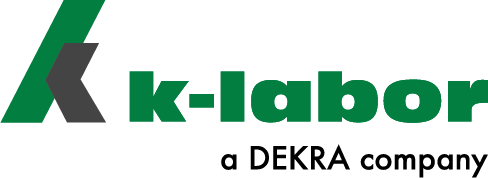Erfahren Sie mehr in unserer
Presseinformation.
Akkreditiertes Prüflabor
nach DIN EN ISO/IEC 17025.
Ihr Spezialist für Metalle,
Kunststoffe, Elastomere.
Surface resistance against friction
Material surfaces are exposed to a wide variety of mechanical stresses in daily use. Friction in particular can lead to abrasion, changes in gloss, loss of color or material fatigue. To ensure the quality and durability of products, we offer comprehensive friction resistance tests in accordance with the relevant DIN EN ISO standards.
Our test methods for rubbing fastness:
- Rubbing fastness test according to DIN EN ISO 105-X12: This method is used to assess the color fastness of textiles to rubbing. A material sample is rubbed successively with a dry and a wet rubbing fabric to test resistance to abrasion and staining.
- Friction test for leather according to DIN EN ISO 11640: Leather surfaces are rubbed with a standardized wool felt to analyse colour and material changes caused by mechanical stress.
- Evaluation of color changes according to DIN EN ISO 105-A05: In order to objectively measure the effects of friction, we use instrumental methods that quantify changes using the gray scale.
Friction testing under the influence of chemicals and ageing
In many applications, materials are not only exposed to mechanical stress, but also to chemical influences. We therefore carry out friction tests in combination with media exposure in order to evaluate the resistance of surfaces under realistic operating conditions:
- Friction resistance after contact with cleaning agents and disinfectants
Surfaces must withstand frequent cleaning cycles without coatings or paints being removed. Long-term resistance can be simulated by testing with specific cleaning agents.
- Testing friction resistance after climatic ageing
Materials change their mechanical properties due to heat, moisture or UV radiation. A friction test after artificial ageing shows whether a product retains its surface properties even after a long period of use.
- Abrasion resistance under chemical stress
In industrial sectors such as the automotive, medical or furniture industries, materials are often exposed to aggressive substances. We simulate these loads and test whether surfaces are worn away or damaged more quickly by friction.
Standards for friction and abrasion tests:
Our test methods are based on international standards, including
- DIN EN ISO 105-X12 – Rubbing fastness test for textiles
- DIN EN ISO 11640 – Rubbing fastness test for leather
- DIN EN ISO 105-A05 – Instrumental evaluation of color changes
- DIN EN ISO 12947 – Martindale test for abrasion resistance
- ASTM D4060 – Taber abrasion test for coatings
Our tests provide you with reliable information about the resistance of your materials to friction and abrasion – both under normal conditions and in combination with chemical stress and ageing. This allows you to identify potential weak points at an early stage and optimize your products in a targeted manner.

